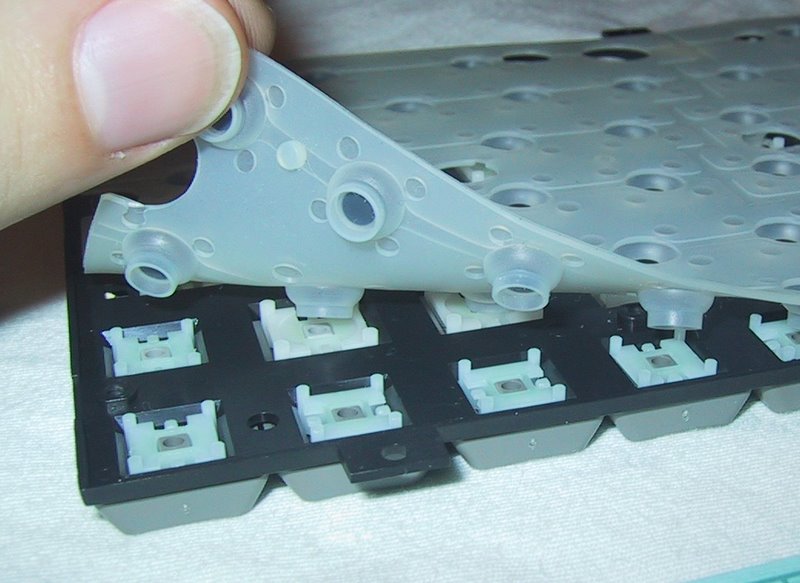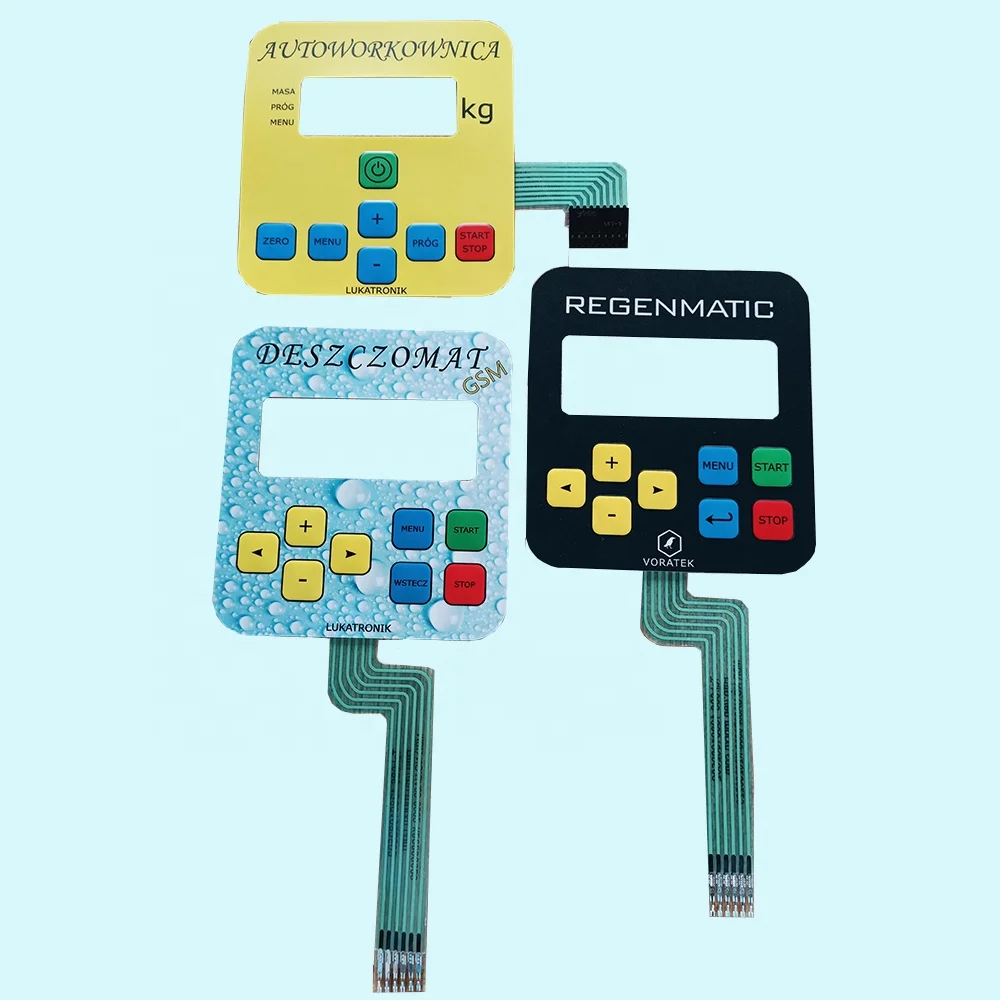Membrane Switch Manufacturer with Fast Prototyping and Delivery
Membrane Switch Manufacturer with Fast Prototyping and Delivery
Blog Article
Understanding the Importance of Membrane Switch in Modern Electronics and Their Applications
Membrane switches over work as a vital element in modern-day electronic devices, supplying an effective user interface for individual interaction. Their personalized and light-weight nature makes them suitable for a variety of applications throughout varied industries. Comprehending their vital components and advantages can supply understandings into their growing significance. As modern technology proceeds to advancement, the advancement of Membrane changes raises concerns about their future applications and style developments. What lies ahead in this vibrant field?

What Are Membrane Switches?
Membrane switches are important parts in contemporary electronic devices, working as user interfaces that facilitate communication between tools and users. These buttons include a number of layers, including a graphic overlay, a sticky layer, and a circuit layer, all of which work with each other to produce a useful and sturdy user interface. The style enables a level, low-profile remedy that can be personalized regarding dimension, form, and visual look, making them ideal for different applications, from customer electronics to medical gadgets. The tactile comments supplied by Membrane switches over improves user experience, while their resistance to dirt and moisture makes them perfect for challenging environments. Membrane buttons can incorporate functions such as backlighting and published graphics, better expanding their usability. Their flexibility and toughness make them a favored option in markets where integrity and simplicity of usage are paramount, ultimately contributing to the seamless operation of contemporary digital devices.
Secret Parts of Membrane Switches Over
While numerous parts add to the capability of a membrane layer button, 3 main layers play significant functions in its style and operation. The top layer, typically made from a durable polymer, acts as the interface for individual interaction, typically including published icons and graphics. Below this is the spacer layer, which preserves the required distance in between the top layer and the circuit layer. This spacer layer assurances that the switch activates only when pushed, stopping unexpected inputs. The circuit layer includes conductive traces that finish the electric circuit when the top layer is depressed. These traces can be made from various products, consisting of copper or silver. Together, these components develop a durable and trustworthy device that is portable and flexible, suitable for a variety of digital applications, from home devices to medical devices. Recognizing these crucial components is essential for valuing the overall capability of Membrane switches.
Benefits of Utilizing Membrane Changes

Membrane Switch Manufacturing Refine
Recognizing the Membrane button production procedure reveals the detailed actions involved in creating these important components. The procedure usually starts with the design stage, where specifications and formats are created using specialized software program. Following this, the graphic overlay is printed on an adaptable substrate, typically using high-resolution printing methods to ensure quality and precision.Next, the adhesive layers are applied, which serve to bond the numerous components with each other. The circuit layers, made from conductive inks or materials, are then published onto a different substrate. These layers are thoroughly straightened and laminated to create a practical switch.After assembly, the switches go through testing to validate functionality and longevity. Quality control actions are implemented throughout the process to identify and correct any type of flaws. Lastly, the finished Membrane buttons are packaged and prepared for distribution, ready to meet the demands of modern electronic applications.
Applications of Membrane Switches Over in Numerous Industries
Membrane buttons are increasingly utilized across various industries, particularly in clinical equipment and customer electronic devices. In the medical field, they provide reputable control interfaces for devices that call for exact operation. Similarly, in consumer electronics, these switches boost customer communication by supplying receptive and smooth interfaces.
Medical Equipment Control
Countless modern-day medical devices make use of Membrane buttons for streamlined procedure and boosted individual communication. These buttons supply a trustworthy, long lasting interface for a variety of applications, including diagnostic equipment, person tracking systems, and surgical tools. Their adjustable designs enable specific formats that can fit the special demands of health care professionals, ensuring instinctive navigation and efficient accessibility to vital features. Furthermore, Membrane buttons are resistant to impurities, making them appropriate for sterile settings. The tactile responses they provide can improve customer confidence, reducing the threat of errors throughout vital clinical procedures. Generally, the integration of Membrane buttons in medical devices substantially contributes to enhanced operational effectiveness and patient safety and security in health care setups.
Consumer Electronics Interfaces
In the domain name of consumer electronic devices, Membrane buttons play a critical function in boosting interface throughout a large range of devices. These buttons are essential to items such as remotes, microwaves, and gaming consoles, offering a reliable and easy to use interface. Their style permits a seamless assimilation of graphics and performance, making it possible for manufacturers to develop sleek, contemporary appearances without jeopardizing use. Membrane buttons are also understood for their longevity, frequently holding up against comprehensive usage and direct exposure to various ecological problems. In addition, try here they can include features pop over to this site like backlighting and responsive responses, additional enhancing the customer experience. As customer demands for sophisticated yet intuitive interfaces expand, Membrane switches continue to be an important component beforehand digital gadget functionality.
Design Factors To Consider for Membrane Switches
Creating reliable Membrane switches calls for cautious attention to numerous aspects that influence both functionality and customer experience. One essential consideration is the choice of products, as they can affect resilience, tactile responses, and visual charm. Selecting an ideal adhesive is essential for assuring long-lasting adhesion and resistance to ecological factors.In addition, the format and layout of the switch must suit customer communication, with button sizes and spacing optimized for ease of usage. The consolidation of graphics and labeling ought to focus on clearness and visibility under various illumination conditions.Consideration of electrical features, such as actuation pressure and switch level of sensitivity, will improve the responsiveness of the Membrane switch. The layout needs to accommodate making procedures to ensure cost-effectiveness and prompt manufacturing. Overall, a well-thought-out layout improves both the capability and the customer experience of Membrane switches in modern electronic devices.

Future Fads in Membrane Switch Innovation
As technology remains to develop, Membrane buttons are poised to incorporate brand-new advancements that will enhance their performance and application in various areas. One substantial fad is the unification of long lasting and versatile products, which will certainly raise the lifespan and integrity of these buttons. Boosted surface area textures and customizable graphics are also prepared for, permitting more user-friendly user interfaces.Moreover, the integration of smart technology, such as touch-sensitive surfaces and haptic feedback, is expected to boost customer communication, making Membrane switches a lot more interesting and receptive. Additionally, advancements in printed a fantastic read electronics will make it possible for extra complex wiring within thinner accounts, better expanding design possibilities.Sustainability will certainly also play an important duty in future developments, as manufacturers check out green products and manufacturing procedures. Generally, these trends will certainly guarantee that Membrane switches over stay relevant and essential in a increasingly electronic and interconnected world.
Regularly Asked Concerns
How Do Membrane Switches Contrast to Typical Mechanical Switches?
Membrane switches deal benefits over standard mechanical buttons, including lowered size, lighter weight, and improved durability. They normally offer a secured surface area, improving resistance to dirt and wetness, making them ideal for varied applications.
What Materials Are Frequently Used in Membrane Switch Construction?

Can Membrane Changes Withstand Extreme Environmental Conditions?
Membrane buttons can withstand extreme environmental conditions, relying on their style and materials. Top notch constructions typically include resilience versus temperature level fluctuations, humidity, and direct exposure to chemicals, making them ideal for various demanding applications throughout sectors.
How Much Time Do Membrane Switches Over Generally Last Before Failing?
Membrane switches over generally display a life-span varying from 1 to 10 million actuations, depending on elements such as usage regularity, ecological problems, and manufacturing quality. Routine maintenance can prolong their longevity and functional reliability considerably.
Are Membrane Switches Customizable for Certain Applications?
Membrane switches are undoubtedly personalized for details applications. They can be customized in dimension, capability, and layout, allowing producers to meet unique user requirements and boost item aesthetics while maintaining operational performance and longevity. Membrane buttons are crucial parts in modern electronic devices, offering as individual interfaces that assist in communication in between tools and individuals. The responsive comments given by Membrane switches enhances individual experience, while their resistance to dust and moisture makes them optimal for testing settings. The consolidation of graphics and labeling should focus on clearness and exposure under different illumination conditions.Consideration of electrical qualities, such as actuation force and switch sensitivity, will certainly enhance the responsiveness of the Membrane switch. Boosted surface appearances and personalized graphics are likewise expected, enabling for even more user-friendly user interfaces.Moreover, the combination of smart innovation, such as touch-sensitive surfaces and haptic comments, is expected to improve user communication, making Membrane changes more appealing and responsive. Membrane switches over offer benefits over traditional mechanical buttons, including lowered size, lighter weight, and improved durability.
Report this page